|
BY: LEEVI SYMISTER  Cancer is a general term that refers to a spectrum of over 100 types of diseases that arise in various parts of the body [1]. In general, all cancers include the uncontrolled formation of new damaged or abnormal cells within the body. We are made up of trillions of cells meaning that cancer can start and proliferate almost anywhere inside of the body [1]. This disease discriminates against neither age nor gender. Prostate Cancer is the most common type of cancer that occurs in men while in women Breast Cancer is most common. In children, however, the most common type of cancers are ones that relate to the blood, brain, and lymph nodes [2]. Cancer is the leading cause of death worldwide [9] and in 2021 alone an estimated 1.9 million people will have been diagnosed with cancer in the United States. Over six hundred thousand people are expected to die from cancer this same year [3]. So what exactly makes this disease so widespread and potent for many people every single year despite our seemingly advanced clinical technology and immune health? The answer lies in cancer's evasiveness to our immune system's defenses.  Cells usually form through a process called Mitosis in which a cell divides producing two daughter cells of the same number and kind of chromosomes. When cells become old or damaged, they die and are replaced with new cells. Our body's cells run off of chemical signals that tell them when they should grow or divide and signals that tell them when they should die or stop dividing, a process known as Apoptosis. In cancer, however, this process can become hijacked where damaged and atypical cells grow without restriction. These cells then can accumulate and eventually form tissues called tumors [6]. What causes this behavior in cancerous cells are mutations (or alterations) of genes inside the DNA. The three main genes altered are Proto-oncogenes, Tumor Suppressor genes, and DNA Repair genes [1]. Proto-oncogenes are responsible for restricting cell growth. Mutated genes of this type are called Oncogenes and can allow cells to proliferate uncontrollably and resist the immune system [1]. Tumor Suppressor genes are responsible for preventing tumors. Mutations of this gene force it to become inactive allowing cells to divide uncontrollably [1]. DNA Repair genes can also be altered allowing mutations in the DNA to go unresolved leading to more damaged and abnormal cells. Mutations affecting these three types of genes can be in the form of rearrangements, duplications, and deletions [5] of sections of chromosomes that comprise our DNA. These mutations can even be inherited from an individual's parents if they are present in the gametes, or reproductive cells, that will later form the offspring [4]. With these changes cancer cells can spread and form tumors throughout the body in a process known as Metastasis [1]. Now that we understand what causes cancer inside of the body, let's look at the factors outside the body that can lead to cancer. Cancer is caused by different carcinogens or substances capable of causing the mutations that develop cancer. It is these that alter the body's DNA and lead to tumors. Environmental carcinogens are things in the environment that can cause cancer. Ultraviolet rays from the sun, for example, can damage DNA and lead to certain skin cancers. Nuclear radiation is another environmental carcinogen that with prolonged exposure can lead to cancer development. DNA and RNA viruses that can hijack a cell's DNA and protein development mechanisms and subsequently duplicate themselves can also lead to cancers [6]. Notably DNA viruses such as the Epstein-Barr, Human Papilloma, Hepatitis B, and Human Herpesvirus-8 and RNA viruses such as Human T Lymphotropic Virus Type 1 and Hepatitis C [7] contribute to cancer rates. Carcinogens can also be things such as one's diet and smoking habits [6]. Potential treatments for cancer include Biomarker testing, Hormone therapy, Immunotherapy, Chemotherapy, Radiation therapy, Stem Cell transplant, Surgery, or Targeted Therapy. Most people will have a combination of these treatments [8] in order to either ease their cancer symptoms or eliminate cancer from their body entirely. What treatment(s) a person will need depends upon the type of cancer they have and how much it has progressed [8]. Each treatment comes with its own risks and side effects which the patient will have to evaluate before receiving their treatment. Cancer is a deadly disease that claims the lives of millions of people worldwide every single year. Despite this discouraging figure, it is important that people remain vigilant in preventing cancer from entering their lives in any way that they can. This can be through a change in one's diet, quitting smoking, and avoiding exposure to environmental carcinogens to the best of one's ability. With this and the continued research and advancement of science and technology, we can hope to one day live in a world where cancer is not a dominant occurrence in our everyday lives. Works Cited "What Is Cancer?" National Cancer Institute. Web.
Hassanpour, Seyed Hossein, and Mohammadamin Dehghani. "Review of Cancer from Perspective of Molecular." Journal of Cancer Research and Practice. No Longer Published by Elsevier, 10 July 2017. Web. "Common Cancer Sites - Cancer Stat Facts." SEER. Web. "The Genetics of Cancer." National Cancer Institute. Web. Lobo, I. (2008) Chromosome abnormalities and cancer cytogenetics. Nature Education 1(1):68 Trichopoulos, Dimitrios, et al. “What Causes Cancer?” Scientific American, vol. 275, no. 3, 1996, pp. 80–87. JSTOR, www.jstor.org/stable/24993351. Accessed 12 Sept. 2021. Liao, John B. “Viruses and human cancer.” The Yale journal of biology and medicine vol. 79,3-4 (2006): 115-22. "Types of Cancer Treatment." National Cancer Institute. Web. "Cancer." World Health Organization. World Health Organization. Web.
1 Comment
BY: CAMERON YUEN 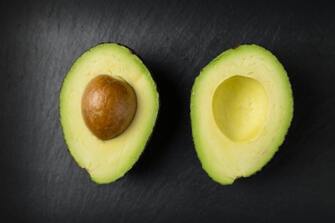 Imagine this: it’s an early Saturday morning with birds chirping and the sun’s rays just beginning to peer through your blinds. Still groggy, you decide to indulge in a proper breakfast, as you prepare your favorite: avocado toast. You recently became vegan, and have found a fond appreciation for the green fruit for its high nutritional value, and of course, its sustainable nature — right? While the former is true, you may want to reconsider your perceptions of the latter. Between avocado production causing mass deforestation, demanding unruly amounts of water, and leaving a dark carbon footprint, the seemingly perennial face of veganism might only be a façade to a world of wasteful realities. But how can this be possible? You switched to veganism to help the environment, so why do so many modern cooking blogs keep telling us to use avocados if they don’t actually achieve that goal? The problem is, many people don’t even realize avocados’ toll on the world, which has disillusioned the public into a green frenzy. The rapid increase in demand has provoked farmers internationally to level up their supply of avocados, which is where we already see the first problem. Avocado trees are quite particular about their growing conditions, some of which being “stable [weather] conditions… [and] 1 metre deep soils,” and they don’t fare well with a “decline in humidity [or] to salinity” (Eldridge). There are very few available areas that meet all of those conditions, so farmers have cleared “forests lands with diverse wildlife” at varying degrees of legality to expand their enterprise (Ayala). Mexico, the avocado haven of the world, is most guilty of this. Some people have “intentionally burned [the forests] to bypass a Mexican law allowing producers to change the land-use permit to commercial agriculture instead of forest land if it was lost to burning” (Ayala). But not only that, the rapid commercialization of avocados has caused “high agrochemical inputs and exploitative practices that degrade soil fertility” (Eldridge).  But among all avocado producers, the struggle for sufficient quantities of water continues to plague them. “Avocados are among the 3 crops causing more water stress in their region of production, [as they] have a global average water footprint of 1981 m3/ton. [To compare,] grape crops have a water footprint 608 m3/ton” (Gonçalves). So now along with having nutrient-deficient soil, the surrounding plants also lack water, damaging their growth and the ecosystem’s biodiversity. And to parallel its water footprint, avocados also leave a significant carbon footprint as well. “Carbon Footprint Ltd estimates that two small avocados in a packet have a CO2 footprint of 846.36 grams (almost twice the amount of a kilo of bananas),” due to the fact that avocados are an international trend (Eldridge). Trade for this product has been increasing through the years, requiring more shipments, at the expense of heightened fuel consumption. But how do we help solve this problem? In no way shape or form should we completely refrain from having avocados. People all over the world depend entirely on avocado production for their income, but we need to be able to find a healthy medium. The root of the environmental distress stems from soaring consumer demand, so local farmers and big corporations have tried to take advantage. If we can decrease, but not nullify, the profitability of avocados, that may guide us out of the frenzy, and give the environment space to adjust. So instead of having that avocado toast breakfast every day, maybe shrink that to once a week. Or instead of buying ungodly amounts of guacamole for Super Bowl Sunday, try to balance that out with some salsa. But regardless of the way you do it, the more you can control that urge to slice open another avocado, the more you’re doing for the environment. Works Cited Eldridge, Honor May. “Why Our Love for Avocados Is Not Sustainable.” Sustainable Food Trust, 31 Jan. 2020, sustainablefoodtrust.org/articles/why-our-love-for-avocados-is-not-sustainable/.
Ayala, Manuel Ochoa. “Avocado: the 'Green Gold' Causing Environment Havoc.” World Economic Forum, www.weforum.org/agenda/2020/02/avocado-environment-cost-food-mexico/. Gonçalves, André. “Avocado Lovers: Your Precious Fruit Is Far from Being Sustainable.” Youmatter, 22 July 2020, youmatter.world/en/benefits-avocados-production-bad-people-planet-27107/. BY: MORGAN ATKINSON  During the cell cycle (both mitosis and meiosis), there are many proteins involved, but Polo-like Kinases have been shown to be regulators of the different stages of the cell cycle, ensuring that it occurs correctly. There are five total Polo-like kinases (PLK’s), each of which has a unique role in regulating cell division (de Cárcer, Guillermo et al. 2011). It is incredibly important that cell division occurs without error, as errors in DNA or other cell structures have critical, and possible fatal consequences, and because of this the proper function of PLK’s 1-5 is vital. Overall, the structure of all five PLK’s are very similar with key structures being the polo-box domain (PBD), which activates the properties of the PLK and also is the site of localization (de Cárcer, Guillermo et al. 2011). In addition, PLK’s also have a serine/threonine kinase domain. Both of these domains are sites of binding, and modification by proteins, which is important to understanding how they regulate the cell cycle (de Cárcer, Guillermo et al. 2011). However, there are some significant differences among all five of the PLKS, both in structure and function. Firstly, PLK1 is involved in several key parts of the cell cycle, including chromosome regulation, the beginning of mitosis, bi-polar spindle formation and cytokinesis (Barr, Siljie & Nigg 2004). PLK2 has been studied and been found to regulate the G1 phase of cell division and it has important roles in centrosome and centriole replication. There have also been shown to be interactions between PLK2 and PLK4, but not much is known (Barr, Siljie & Nigg 2004). PLK3 is involved with the S phase of cell division, specifically DNA replication and mitotic entry via golgi apparatus. PLK4 is involved in centriole replication, similar to PLK2. Finally, PLK5 so far has not been identified as regulating the cell cycle, but instead has an incomplete PDB and is involved in neuron differentiation (de Cárcer, Guillermo et al. 2011). While PLK regulation is key to having a proper cell cycle and division, PLK’s, specifically PLK1 has been linked to tumorigenesis and cancer outcome. PLK1 has been found to be overexpressed in samples of many different types of cancer (Lee et al 2014). One of the theories is that since PLK1 is involved in centrosome maturation and chromosome maturation, if it does not function properly, abnormal chromosome separation can occur, causing cancer cells, which is due to the loss of oncogenes (Lee et al 2014). PLK1 has also been shown to bind to, and inhibit the anti-tumor gene, P53. In addition, PLK1 is also involved with apoptosis, since it interacts with FAAD (which controls apoptosis), and inhibits it, preventing proper apoptosis and leading to cancer cells (Lee et al 2014). The combination of the inhibition of apoptosis, inhibition of P53 and abnormal chromosome division creates the perfect conditions for cancer cells (Lee et al 2014). However, other PLK’s are also implicated in cancer cells, as PLK2 is silenced in several types of cancer, and mice studies have shown that decreased levels of PLK3 and PLK4 make mice more susceptible to tumors (PMC3230524). Finally, PLK5 has been shown to be silenced in brain tumors, but not much more is known about its role (Lee et al 2014). The role of PLK1 in cancer has also been shown through several successful inhibitors, as it is a key target in anti-cancer therapies (Lee et al 2014). Some of these inhibitors include BI2536, Volasertib, Poloxin and others (Gutteridge et al 2016). All of these are effective inhibitors as BI2536 was shown to inhibit and prevent tumor growth, Volasertib was shown to be a competitive ATP-inhibitor and work on preventing cancer, and finally, Poloxin was shown to be a competitive inhibitor by binding to the Polo Box Domain and interfering with the structure and function of PLK1 (Gutteridge et al 2016). Currently, there are also other PLK inhibitors being studied, with the goal to have cancer treatments that are targeted and have significantly less side effects than chemotherapy Gutteridge et al 2016). Overall, the PLK group has incredibly important roles in cell division; however, they also have the potential to go awry and cause both tumors and cancers of many types. While PLK1 has been shown to have the clearest link between elevated levels and cancer, other PLK’s have been implicated in cancer growth (Lee et al 2014). Finally, PLK’s offer a specific drug target that allow for cancer therapies without as many side effects as chemotherapy (Gutteridge et al 2016). More research needs to be, and is being, conducted regarding the role of PLK’s in cancer and the potential for targeted drug therapies. Works Cited Barr, F., Silljé, H. & Nigg, E. Polo-like kinases and the orchestration of cell division. Nat Rev Mol Cell Biol 5, 429–441 (2004). https://doi.org/10.1038/nrm1401
de Cárcer, Guillermo et al. “From Plk1 to Plk5: functional evolution of polo-like kinases.” Cell cycle (Georgetown, Tex.) vol. 10,14 (2011): 2255-62. doi:10.4161/cc.10.14.16494 Gutteridge, Rosie Elizabeth Ann et al. “Plk1 Inhibitors in Cancer Therapy: From Laboratory to Clinics.” Molecular cancer therapeutics vol. 15,7 (2016): 1427-35. doi:10.1158/1535-7163.MCT-15-0897 Lee, Su-Yeon et al. “Polo-like kinases (plks), a key regulator of cell cycle and new potential target for cancer therapy.” Development & reproduction vol. 18,1 (2014): 65-71. doi:10.12717/DR.2014.18.1.065 BY: DAVID KHAWAND  Breast cancer is a phenomenon in which breast cells grow uncontrollably (CDC). In a normal cell, the cell cycle is regulated by signaling pathways that determine whether it will grow, replicate its DNA, or divide. Throughout the cycle, checkpoints allow the cell to decide whether it should proceed to the next step, fix any errors, or commit cell death. In cancer cells, the whole checkpoint system is neglected, permitting the cell to divide uncontrollably. This is due to mutations in the DNA of healthy breast cells that allow them to evade the cell cycle checkpoints and apoptosis (cell death). One in eight women in the U.S. will be affected by this disease in her lifetime. In 2021, 281,550 new cases are expected to be diagnosed in women and 2,650 new cases in men. 43,600 women are projected to die from this disease (U.S. Breast Cancer Statistics). Hundreds of organizations are working to find a cure for this illness. Cancer cell’s rate of growth is measured by a TNM scale. This progression is broken up into four stages. The first through third stage signifies that cancer is present. The greater the stage, the larger the tumor becomes and the more it has spread into nearby tissue. In the fourth and final stage, metastasis occurs (NIH). Metastasis is the process in which cancer spreads from its original primary site of growth. When this happens, doctors can do very little to reverse the cancer progression and the patient has a very low chance of survival. Invasive breast cancer is the most frequent type of breast cancer. This particular cancer originates in the milk ducts and can spread into the surrounding breast tissue. The symptoms that may be associated with this kind of malignancy include lumps in the breast or underarm area, rashes or redness of the breast, swelling, and nipple pain. The two main categories of invasive breast cancer include invasive ductal carcinoma (IDC) and invasive lobular carcinoma (ILC). IDC is more common than ILC, constituting about 8 in 10 invasive breast cancer cases (American Cancer Society). Invasive ductal carcinoma begins in the milk duct cell lining in the breast. Then, it breaks through the milk duct wall, growing around the breast tissues and may metastasize through the bloodstream. Invasive lobular carcinoma impacts 1 in 10 invasive breast cancer patients (American Cancer Society). ILC starts in the milk-producing glands and can metastasize similarly to IDC. In addition, ILC is harder to detect on a physical examination and imaging. In this article review, the topic of breast cancer has been discussed. The two types mentioned were invasive ductal carcinoma and invasive lobular carcinoma. In a typical process of cancer development, it follows four steps on the TNM scale. Metastasis is the process of cancer cells leaving its original site and traveling throughout the body via the bloodstream. Once this occurs, very few treatments are available to control the spread. Works Cited "Breast Cancer Treatment: Treatment Options for Breast Cancer." American Cancer Society. Web. 07 Sept. 2021.
Brown, Ken. "Invasive Ductal Carcinoma (IDC) Breast Cancer: Johns Hopkins BREAST CENTER." Breast Cancer: Johns Hopkins Breast Center. 03 Nov. 2017. Web. 07 Sept. 2021. "Cancer Staging." National Cancer Institute. Web. 07 Sept. 2021. "Cell Cycle in Cancer." Cyclacel. Web. 07 Sept. 2021. "Invasive Breast Cancer (idc/ilc): Types of Invasive Breast Carcinoma." American Cancer Society. Web. 07 Sept. 2021. "U.S. Breast Cancer Statistics." Breastcancer.org. 04 Feb. 2021. Web. 07 Sept. 2021. "What Is Breast Cancer?" Centers for Disease Control and Prevention. Centers for Disease Control and Prevention, 14 Sept. 2020. Web. 07 Sept. 2021. BY: CAPRI MILLS Hi! My name is Capri Mills. I'm a junior in high school and have a passion for science, psychology, and writing. I also enjoy giving back to the environment and my community in any way I can. After high school, I plan to continue on a neuroscience path throughout college and beyond.  Have you ever noticed that certain logos appear to pop out at you? Or that hotel hallways’ color palettes seem to flow in a timeless manner? This isn’t coincidental- it is exactly the company’s goal. Color psychology is utilized by many different places, all to trick your mind into thinking of something in one way. It is a powerful subliminal tool that can be used to influence mood, increase blood pressure, and even increase metabolism (Cherry). However, it’s important to note that while there is some hype around color psychology, most reactions are based on personal experience, and it cannot be said that one color makes everyone feel the same way (Ciotti). Still, there is a bit of research to back up the bold statements many color psychology websites and books proclaim. For example, red is usually associated with aggression and anger. It’s been shown that dominance is shown by a flush of red on bare skin in many species of animals, like primates, and fake red bands can mimic this to cause the same dominance response. This is because a testosterone surge produces redness, whereas fear leads to paling (Elliot). But it’s more difficult to produce this kind of evidence for other colors not usually seen in animals, such as purple, so little can be truly proclaimed.  In a more speculative sense, it’s certainly true that people associate different colors with specific holidays, objects, or emotions. In Western culture, red and green are associated with Christmas, and black and orange with Halloween. Pink goes with femininity whereas blue is associated with masculinity. Once again, it is all still very culture-oriented. Black is seen as a deathly sort of color in the Western world; it’s considered the correct color to wear to funerals. On the other side of the spectrum, white is seen as the respectful color to wear to funerals in China. Although there is still no concrete evidence to back up a lot of color psychology enthusiasts’ claims, there is something to be said about the way certain colors make us feel. But whether it’s biological, culture-oriented, or something else entirely remains quite a mystery. Just watch what you wear. Works Cited Cherry, Kendra. "Can Color Affect Your Mood and Behavior?" Verywell Mind. 28 May 2020. Web. 15 June 2021.
Ciotti, Gregory. "Color Psychology: How Colors Influence the Mind." Psychology Today. Sussex Publishers, 20 Aug. 2014. Web. 15 June 2021. Elliot, Andrew J. "Color and Psychological Functioning: A Review of Theoretical and Empirical Work." Frontiers in Psychology. Frontiers Media S.A., 2 Apr. 2015. Web. 15 June 2021. BY: CAPRI MILLS Hi! My name is Capri Mills. I'm a junior in high school and have a passion for science, psychology, and writing. I also enjoy giving back to the environment and my community in any way I can. After high school, I plan to continue on a neuroscience path throughout college and beyond.  Ever woken up from an odd dream and wondered where in the world it came from? Dreams- a combination of visual, sensual, and acoustic stories that occur in our minds when we sleep- have puzzled scientists for ages. Some seem very lifelike and realistic whereas others are totally outlandish and bizarre. Throughout history, the meaning of dreams has been debated, and there are still theories that discuss the reason behind them nowadays. However, we are closer than ever to figuring out exactly why our dreams are the way they are. A notable psychological approach to dreams was Sigmund Freud’s. He was a psychoanalyst who proposed that dreams were a manifestation of our subconscious desires and wishes, especially forbidden ones. He thought it was our mind’s way of transforming a taboo or forbidden thought into a “non-threatening form” (Mcleod). People took Freud’s ideas of dream symbolism out of hand, though, making dream dictionaries that are still popular today. Nowadays, however, there are a lot more scientifically based theories on dreams. One of the most popular of these theories is the activation-synthesis hypothesis, which says that dreams are just electrical impulses in our brain that pull random images and thoughts from our brains. Aka, they don’t truly mean anything. Dreams are just an attempt to organize and make sense of these impulses (Linden). The other side of this, though, is the “threat simulation theory”, which states that dreams actually do have a purpose: to be a biological defense mechanism that simulates threatening events in life. This can be backed up by the fact children living in a stressful and threatening environment have highly activated threat simulation systems and high dream production whereas children in safe environments do not (Valli et al.). Overall, there is simply no straight-cut answer as to why we dream. Two likely theories are the activation-synthesis hypothesis and threat simulation theory, but neither can be proven definite yet. Or you could go the Freudian route and say they are a manifestation of our subconscious desires. While it’s been shown that sleep is needed to recharge both our bodies and brains (“Why Do We Need Sleep?”), dreams seem to remain a mind-boggler. Perhaps one day the mystery will be solved. Works Cited Linden, Sander Van Der. "The Science Behind Dreaming." Scientific American. Scientific American, 26 July 2011. Web.
Mcleod, Saul. "Sigmund Freud's Theories." Sigmund Freud's Theories | Simply Psychology. Web. 12 June 2021. Valli, Katja, Antti Revonsuo, Outi Pälkäs, Kamaran Hassan Ismail, Karzan Jalal Ali, and Raija-Leena Punamäki. "The Threat Simulation Theory of the Evolutionary Function of Dreaming: Evidence from Dreams of Traumatized Children." Consciousness and Cognition. U.S. National Library of Medicine, Mar. 2005. Web. 12 June 2021. "Why Do We Need Sleep?" Sleep Foundation. 11 Sept. 2020. Web. 12 June 2021. BY: CAMERON YUEN Hello! My name is Cameron Yuen, a current senior in high school. I'm going to be attending Tufts University, and I intend on studying Computer Science. I want to use technology to incite change, whether it's bridging the digital divide, aiding public health or bolstering sustainability efforts. Outside of academics, I'm a competitive diver and an avid Overwatch player!  Any person who has experienced cancer, be it themselves or a loved one, knows how condemning the restless hours of concern and chemotherapy feels. Our thoughts, their cancer, rip us apart from the inside, making us constantly ponder “what-if?” Fortunately, there may lie mental and physical refuge with radiation oncology — specifically the photon and proton treatments. To generally understand how this radiation functions, it helps to parallel it to X-ray imaging. Simply put, “photons are a higher energy version of the same X-rays used for diagnostic imaging” (“Photons and Protons”). The particles are then oriented towards the cancer-afflicted area where “they break the DNA inside the cancer cell… [and] the cancer cell dies” (“Photons and Protons”). This differs from chemotherapy in a few ways, like the means and locus of treatment. Chemotherapy uses specialized drugs to battle cancer cells throughout the body, while radiation aims to kill cells in a localized area through a beam of energized particles. Though both methods vary in terms of their administration, their side effects are similar. Between hair loss, fatigue, and nausea, both chemotherapy, and radiation take a toll as their efforts to kill cancerous cells also damage perfectly healthy ones (“What’s the Difference Between Chemotherapy and Radiation?”). 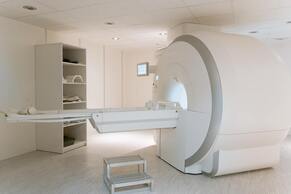 That’s where proton therapy shines. Called “heavy-ion therapy,” proton radiation works similarly to its photon counterpart, but with one key difference: the lack of an “exit dose” (“Photons and Protons”). The photon treatment includes a stream of particles that “pass through the cancer and out the other side,” while proton treatment “stops at the tumor” (“Photons and Protons”). Especially in areas in close vicinity to vital organs, this feature is extremely beneficial. Both methods have proved to be equally effective in killing cancer, so having a way to minimize the collateral damage only adds to the laundry list of positives about radiation oncology. However, like anything related to cancer, there’s always a drawback. Proton therapy is a far more expensive method than photon, which poses a potentially complex decision as to whether the side effects of photon therapy are enough to justify the use of its sister method (“Photons and Protons”). But as our medical community trudges along in the war against cancer, continuing to accumulate mini-victories, there should be no doubt that we’ll perfect these methods, paving a path for advanced radiation techniques in oncology and beyond. Works Cited “Photons and Protons.” Promise and Progress, 20 Dec. 2019, www.hopkinsmedicine.org/news/articles/photons-and-protons.
“What's the Difference Between Chemotherapy and Radiation?” WebMD, WebMD, www.webmd.com/cancer/cancer-chemotherapy-radiation-differences. BY: CAPRI MILLS Hi! My name is Capri Mills. I'm a junior in high school and have a passion for science, psychology, and writing. I also enjoy giving back to the environment and my community in any way I can. After high school, I plan to continue on a neuroscience path throughout college and beyond. 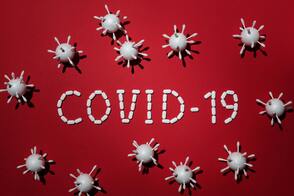 As we all know, COVID-19 has dominated our lives these past few months, with signs about it in every store and new mandates announced nearly weekly. Although many news stations broadcasted stories about the virus seemingly nonstop, many people still don’t know the exact science of it. But they should—it’s imperative to know what exactly will happen to your body if you get the virus based on the knowledge of what has happened to the bodies of those who have gotten it. Before we get into the nitty-gritty of COVID-19, though, let’s talk about what it actually is. Well, as we all know, it’s a virus. But viruses are often misunderstood. Contrary to popular belief, viruses aren’t actually alive (McNeil). Instead, a virus is a strand of genetic material, either DNA or RNA, rolled up inside of a protein shell. And despite being clever and mutating to fit environmental conditions, viruses cannot survive long without a host (McNeil). That’s why they need us. Inside of our bodies, they can use our own cells against us to do the dirty work. They do this by hijacking our cells and forcing them to reproduce the virus’s genetic code, making as many of themselves as possible (Gelderblom). 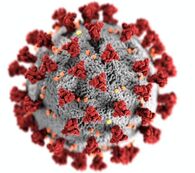 Let’s turn to coronaviruses in particular now. All coronaviruses have a “spiky” shell, which is why their prefix is corona since it’s Latin for crown, precisely what the spikes look like underneath a microscope ("What Is Coronavirus? The Different Types of Coronaviruses."). These spikes, while good for the virus, are problematic to us. They allow the virus to survive for a long period without a host and attach themselves to cells. But unlike other coronaviruses, COVID-19 attaches to cells in our lower respiratory tract, not our higher one. This is where it gets into the lungs, heart, kidney, liver, brain, and more (Goldman). Inside of the lungs, COVID-19 leaves damage in its wake as it attacks more and more cells, creating symptoms like fever and low blood pressure (Paul). It first strikes the epithelial cells (kind of like our body’s shield) in our airways, leaving our body undefended to fluid and debris (“Learn about COVID-19”). Later, COVID-19 moves on to invade the air sacs, called alveoli, in our lungs. This is especially bad because when the alveoli become too damaged and inflamed, pneumonia ensues, leaving the possibility of long-lasting damage, like shortness of breath. Moreover, the type of pneumonia COVID-19 causes is said to leave your lungs looking like ground-up glass, and if pneumonia progresses, it can turn into acute respiratory distress syndrome, which is where the alveoli fill with fluid, making it hard to breathe (Seladi-Schulman). It’s evident that COVID-19, though portrayed by some to be merely a short-term illness, certainly can leave a lasting impact on its victims. As always with science, knowing how viruses invade and damage cells are important, as it can hopefully help us protect against them. So stay knowledgeable. Works Cited Gelderblom, Hans R. "Structure and Classification of Viruses." Medical Microbiology. 4th Edition. U.S. National Library of Medicine, 01 Jan. 1996. Web. 14 June 2021.
Goldman, Bruce. "How the Coronavirus Destroys Cells and How Scientists Attempt to Disarm It." Stanford Medicine. 15 Oct. 2020. "Learn about COVID-19." Learn about COVID-19 | American Lung Association. Web. 14 June 2021. Paul, Marla. "Why COVID-19 Pneumonia Lasts Longer, Causes More Damage than Typical Pneumonia." Why COVID-19 Pneumonia Lasts Longer, Causes More Damage than Typical Pneumonia. 11 Jan. 2021. Web. 14 June 2021. Seladi-Schulman, Jill. "What to Know About COVID-19 and Pneumonia." Healthline. Ed. Meredith Goodwin. Healthline Media, 09 June 2020. Web. 14 June 2021. McNeil, Taylor. "What Are Viruses and How Do They Work?" Tufts Now. 03 Apr. 2020. Web. 14 June 2021. "What Is Coronavirus? The Different Types of Coronaviruses." UKRI. 25 Mar. 2020. Web. 14 June 2021. BY: CAMERON YUEN Hello! My name is Cameron Yuen, a current senior in high school. I'm going to be attending Tufts University, and I intend on studying Computer Science. I want to use technology to incite change, whether it's bridging the digital divide, aiding public health or bolstering sustainability efforts. Outside of academics, I'm a competitive diver and an avid Overwatch player!  With tests accumulating on our schedules, pressures to perform well piling on from those around us, and the gargantuan task of managing the college admissions process looming over students across the country, we all wish there were alternate ways to succeed. Average GPAs and standardized test scores are at an all-time high, and we all scramble to include ourselves in those statistics in an effort to appear impressive. The system seems to demand all of our time and energy, to produce results that outshine everyone else. However, fostering this mindset, in my experience, only disillusions you into thinking you’ve improved as an individual. Countless times in my battle with the Common App, I’ve felt pressured to have filler content in my awards and extracurriculars section, so I scrambled around school and the Internet to feign more passions. That mentality didn’t take me far. Although I was able to put more words in my essays and activities sections, that’s all that they were — words. They didn’t present any other dimension about myself and surely didn’t demonstrate interest, because they were so disjointed from my core identity they didn’t make sense to be there. Stuck trying to weave a thread between each aspect of my application, I struggled to fully express my journey as a human being, and instead sounded like a robot programmed into the admissions process. I, towards the end of the journey, did clean up my application and let my selfhood shine more which is where I believe my acceptances stemmed from. However, I wouldn’t consider it a complete success; I still believe I made plenty of mistakes. In retrospect, to have improved my standing I would’ve had to change my attitude before I even started thinking about colleges. On the surface, I’ve known for a while that STEM topics piqued my interest, and went about my school career chasing ways to express that. Between taking the hardest classes and achieving high grades in those fields and forcing myself into STEM-based volunteer work and clubs, I felt like I was doing everything correctly. But looking back, I was missing the most critical aspect: growth. I never let the seed of my STEM interest blossom into what it was meant to be; instead, I forced it to become what I thought would be most presentable. I thought that those results would increase my utility in the future, but in reality, only maturing and learning can do that. Simply put, subscribing to the natural course of human growth not only improves your aptitude but facilitates your journey to becoming the person you want to be.  However, many people don’t believe this mentality works for everyone. It makes total sense that this path seems impractical at times, as people’s interests don’t always align with a lucrative career. On the surface, I can agree, but with deep introspection and exploration of what’s out there, I think any interest can become fruitful. For example, I’ve always been obsessed with video games, yet have only viewed them as a hobby, as video game development didn’t interest me. But if I had let my love for gaming and STEM subjects grow alongside one another, I would’ve seen far more possibilities. If I decided to start streaming on Twitch or creating YouTube content in gaming, I may have discovered that I enjoy editing/graphic design and audio engineering, both of which companies in diverse fields demand. Even with more specific interests like soap carving or bird watching, there still are advantageous paths to follow as long as you let them grow. For example, through soap carving, you may find that market bar soaps are not as ergonomically designed as they could be, and you could delve into engineering psychology to restructure how companies think to make soap. With bird watching, maybe you’ve begun to catalog your findings and publish them, building a proclivity to express your observations about nature in writing. From there, maybe you’ve begun to appreciate that art form and could start using those writing samples to get involved with TV and movie scriptwriting, novel and poem authorship, or nature journalism. So if you’re ever questioning what direction your interests can take you, think about them like plants. Regardless of what seed you start with, if you give it the correct space and resources to grow, it will always produce oxygen, just like how all of our interests can make meaningful contributions to the world. Works Cited Barber, Nathan. “Focus on the Process and Results Will Follow.” Edutopia, George Lucas Educational Foundation, 2 Oct. 2014, www.edutopia.org/blog/focus-process-results-will-follow-nathan-barber.
BY: CAMERON YUEN Hello! My name is Cameron Yuen, a current senior in high school. I'm going to be attending Tufts University, and I intend on studying Computer Science. I want to use technology to incite change, whether it's bridging the digital divide, aiding public health or bolstering sustainability efforts. Outside of academics, I'm a competitive diver and an avid Overwatch player! 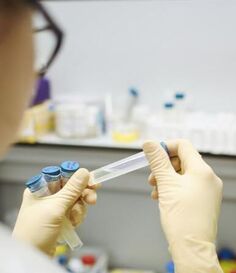 So you’re finally on your way to get the COVID-19 vaccine. You’ve seen the positive statistics and clinical trials about mRNA’s immunogenicity on the news and built enough confidence to put faith in modern-day scientists. But deep in your heart, you still can’t help but feel trepidation. Understandable. What are they even putting in us, anyway? Here, I’ll take you on a journey — from the large vaccine development facilities to the microscopic world of our cells. mRNA is developed in vitro, or in a lab, using what’s called a complementary DNA (cDNA) template, typically in the form of “plasmid DNA (pDNA),” to incorporate what's called an ORF, or open reading frame (Schlake 1319). These ORFs determine the production of certain amino acids, and that is crucial to mimic the structure of coronavirus spike-proteins. Also, they’re the means on which the “two elements essential for the function of mature eukaryotic mRNA: a ‘cap,’ i.e., a 7-methyl-guanosine residue joined to the 5′-end via a 5′-5′ triphosphate,12 and a poly(A) tail at the 3′-end” can attach to (Schlake 1320). Using this pDNA, scientists can take advantage of its ORF, a “bacteriophage promoter,” and also its “unique restriction site for linearization of the plasmid to ensure defined termination of transcription” (Schlake 1320). The pDNA is transcribed into mRNA through a “mixture containing recombinant RNA polymerase (T7, T3 or SP6) and nucleoside triphosphates” (Schlake 1320). What’s important is that this reaction can incorporate a “cap analog,” which, as the name implies, could attach a cap to the mRNA. Also, the aforementioned poly(A) tail, if not already included in the pDNA template, can be added post-transcription. In general, mRNA is incredibly susceptible to degradation; the cap and tail help neutralize that. They’re required to stabilize mRNA in the cytosol, where [RNA] decay is catalyzed predominantly by exonucleases” (Schlake 1320). 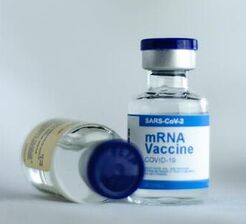 But before the synthetic mRNA gets to you, clinics must first store them at subzero temperatures. The Moderna vaccine variant requires temperatures between “-13 degrees Fahrenheit and 5 degrees Fahrenheit,” and Pfizer, “-112 degrees Fahrenheit to -76 degrees Fahrenheit” (Sweet ). Just like how cap and poly(A) protect the mRNA, the frigid environment also staves away “the enzymes [in the open environment] that break down mRNA… [as they] ‘don't work at really, really cold temperatures’” (Sweet). Once you’re at the site and ready to receive your vaccine, then the mRNA can thaw out. However, the obstacles don’t stop when the synthetic material enters our bodies. Our cells contain what are called ribonucleases, or RNases, which catalyze reactions that degrade mRNA. They’re “present in all organisms, including bacteria, yeast, plants, and animals, and in almost all tissues and body fluids of mammals” to destroy potentially harmful RNA of which could code cancer cell production (“Ribonucleases”). For the vaccine to have any effect, the mRNA must avoid contact with these RNases. So to achieve that, scientists have created nanotech vectors, lipid nanoparticles, essentially to act as their police escort. The mRNA in Pfizer-BioNTech, “complexed with positively-charged lipids… [makes the mRNA] more stable and resistant to RNase-mediated degradation” (“Nanomedicine”). From there, the mRNA is safely able to express what it was coded for, spike protein production. Mimicking a viral cell’s spike protein, which essentially causes the disease, the mRNA elicits an immune response to help our bodies recognize those proteins and destroy them in case of future infections. “Both BNT162b2 and mRNA-1273 deliver mRNA encoding genetic variants of the SARS-CoV-2 spike protein that are more stable and immunogenic than the natural protein” (“Nanomedicine”). See? Nothing to worry about. If you really think about it, synthetic mRNA should be more afraid of what you could do to it, not the other way around. Works Cited Schlake, Thomas, et al. “Developing MRNA-Vaccine Technologies.” RNA Biology, Landes Bioscience, Nov. 2012, www.ncbi.nlm.nih.gov/pmc/articles/PMC3597572/.
Sweet, Joni, “Why the COVID-19 Vaccine Has to Be Kept So Cold, According to Experts.” Health.com, 29 Dec. 2020, www.health.com/condition/infectious-diseases/coronavirus/why-does-the-covid-19-vaccine-have-to-be-kept-so-cold. “Ribonucleases.” Ribonucleases - an Overview | ScienceDirect Topics, www.sciencedirect.com/topics/biochemistry-genetics-and-molecular-biology/ribonucleases. “Nanomedicine and the COVID-19 Vaccines.” Nature News, Nature Publishing Group, 27 Nov. 2020, www.nature.com/articles/s41565-020-00820-0. |
Quest Student Research InstituteOn Science, Computation, Medicine, and Academic Success Archives
January 2022
|

 RSS Feed
RSS Feed